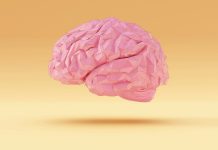
Older adults who move more, either with daily exercise or even simple routine physical activity like housework, may preserve more of their memory and thinking skills, even if they have brain lesions or biomarkers linked to dementia.
This is the finding of a new study conducted by the Rush University Medical Center in Chicago.
The study looked at 454 older adults; 191 had dementia and 263 did not.
All participants were given physical exams and thinking and memory tests every year for 20 years.
Participants agreed to donate their brains for research upon death. The average age at death was 91.
At an average of two years before death, the researchers gave each participant an activity monitor called an accelerometer.
The wrist-worn device monitored physical activity around the clock, everything from small movements such as walking around the house to more vigorous movements like exercise routines.
The researchers collected and evaluated seven days of movement data for each participant and calculated an average daily activity score.
The results were measured in counts per day, with an overall average of 160,000 counts per day.
People without dementia had an average of 180,000 counts per day and people with dementia had an average of 130,000 counts per day.
After death, the researchers examined the brain tissue of each participant, looking for lesions and biomarkers of dementia and Alzheimer’s disease.
The researchers found that higher levels of daily movement were linked to better thinking and memory skills.
The study also found that people who had better motor skills, skills that help with movement and coordination, also had better thinking and memory skills.
For every increase in physical activity by one standard deviation, participants were 31 percent less likely to develop dementia.
For every increase in motor ability by one standard deviation, participants were 55 percent less likely to develop dementia.
The analysis showed that physical activity and motor abilities accounted for 8 percent of the difference among people’s scores on the thinking and memory tests.
The relationship between activity and test scores was consistent even when researchers adjusted for the severity of participants’ brain lesions.
They also found that the relationship was consistent in people who had dementia and people who did not.
The link between a higher level of physical activity and better thinking and memory skills was unrelated to the presence of biomarkers of Alzheimer’s disease and related disorders.
The team suggests that exercise is an inexpensive way to improve health, and the study shows it may have a protective effect on the brain.
A limitation of the study was that it did not have data on how active participants were over the course of their lives, just at one point later in life, so it is unknown if physical activity in early life also may have played a role.
Also, the study did not include the type of physical activity, so it is difficult to determine if one physical activity may be more beneficial than another.
The study is published Neurology®, the medical journal of the American Academy of Neurology.
Copyright © 2019 Knowridge Science Report. All rights reserved.
Source: Neurology.



